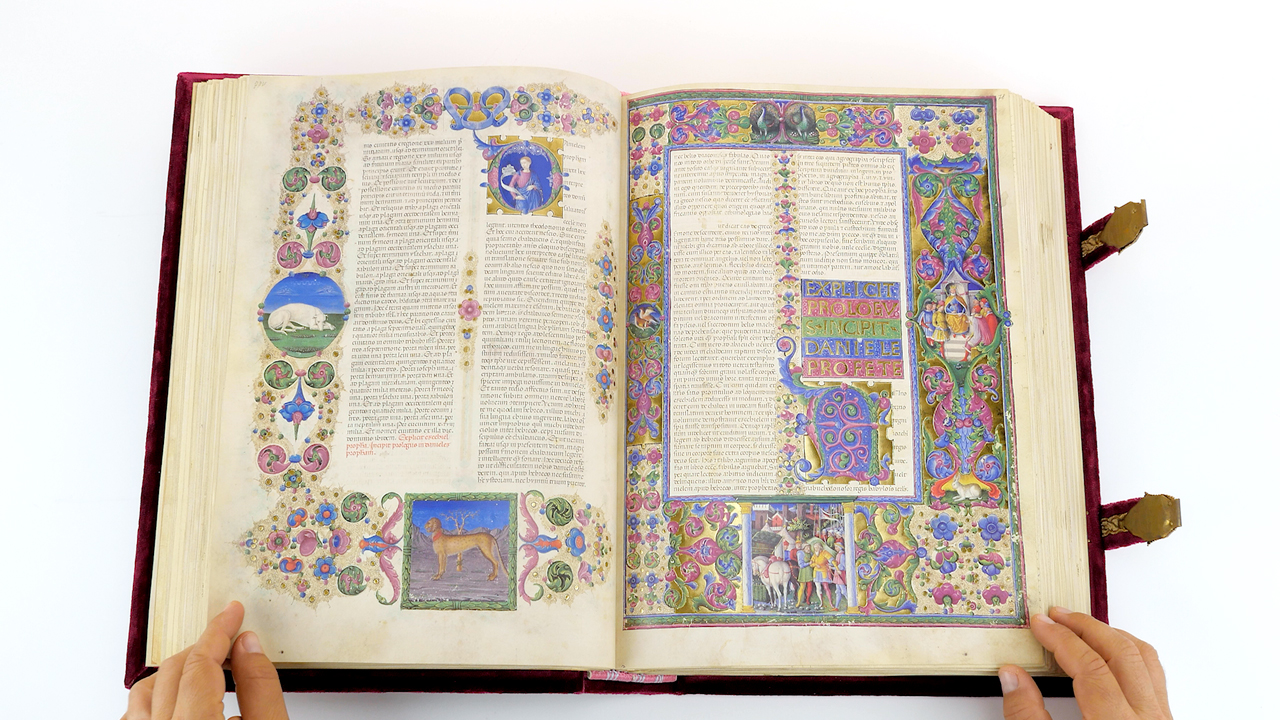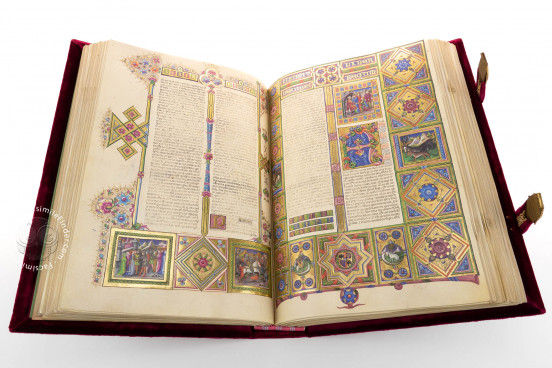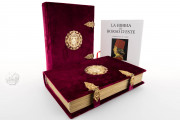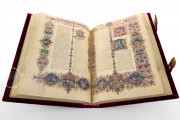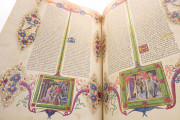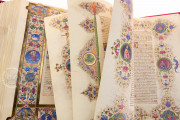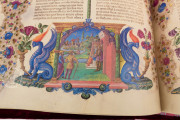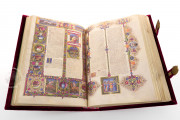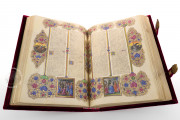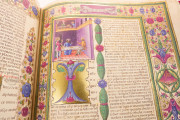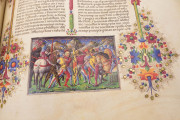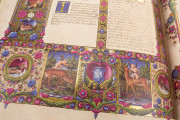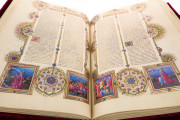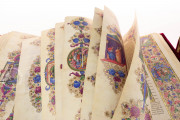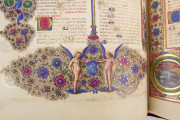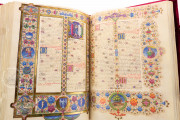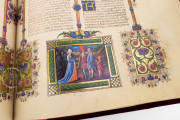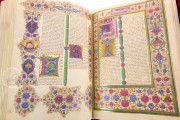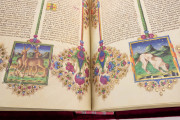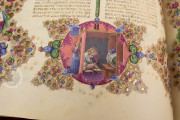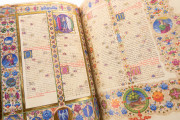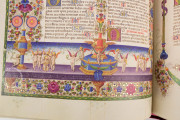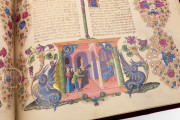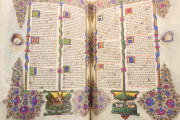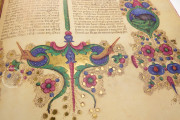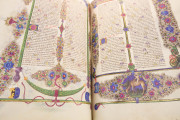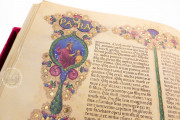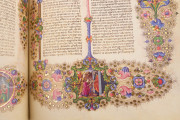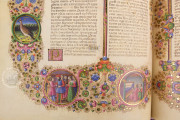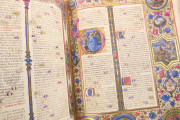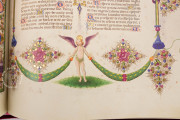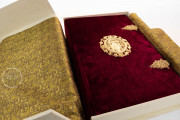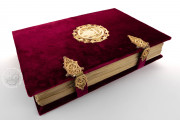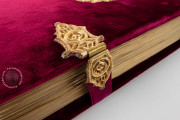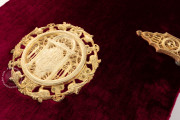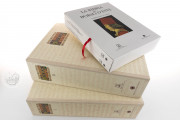The Bible of Borso d'Este is one of the most beautiful examples of Renaissance illumination from Northern Italy. The codex, also known as the Bibbia di Borso d'Este, was written and illuminated in the third quarter of the fifteenth century and features several scenic miniatures, historiated initials, architectural border motifs, and medallions.
Iconographic and Decorative Apparatus
Written in Latin and dating 1455-1461, the Bible of Borso d'Este displays an outstanding iconographic apparatus. Consisting of two volumes, the manuscript exhibits a varied and rich illustrative decorative apparatus featuring borders with friezes adorned with floral decorations rosette, and rondelle patterns.
Thanks to some documentary evidence, we are informed about the identities of the artists such as Taddeo Crivelli, Franco Rossi, Giorgio d'Alemagna, Marco di Giovanni dell'Avogaro, Girolamo da Cremona.
Combination of Italian and Flemish Art
The figurative cycle betrays an inspiration to the masters of the early Renaissance such as Andrea Mantegna, Piero della Francesca, and Cosme Tura, indeed, Crivelli was influenced by Pisanello, who like him, worked for a long time at the court of Ferrara.
The Bible of Borso d'Este, with its glowing and vivid colors, conveys the idea of the luxury and culture associated to the Este family, representing the combination of Italian and Flemish stylistic elements.
Borso d'Este: Commissioner and Patron of Arts
The work, as its title suggests, was commissioned by Borso d'Este, Duke of Modena and Reggio, who, in addition to being a powerful politician, was an amateur and patron of visual arts. Testimony to his cultural interests is the library he created in Ferrara, which scholars from the university were allowed to use.
Italian Gothic Script
The Bible of Borso d'Este features a beautiful example of Italian Gothic script laid out in two columns per page by Pietro Paolo Marone, identified as the scribe of the entire work.
Life of the Manuscript
The life of the manuscript is obscure, and it is accounted for only until 1598 when the Este family took it with them as they moved from Ferrara to Modena. However, it remains uncertain what happened next for the manuscript reappeared three centuries later in Paris where Senator Giovanni Treccani bought it and bequeathed it to the library in Modena where it still safely treasured.
We have 1 facsimile edition of the manuscript "Bible of Borso d'Este": Bibbia di Borso d'Este facsimile edition, published by Franco Cosimo Panini Editore, 1997
Request Info / Price
